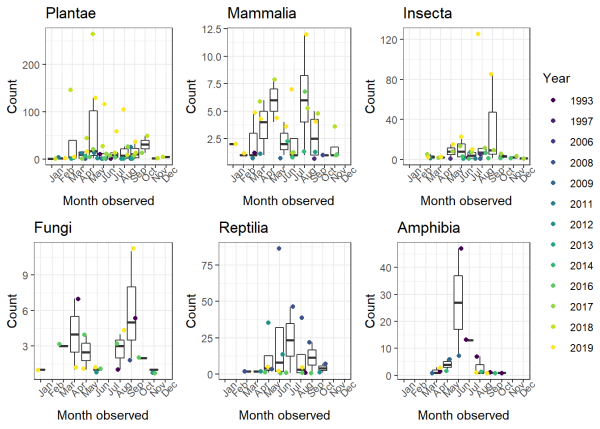-
By Matt Brousil In this post I'll walk through some of the basics for getting started importing, formatting, and creating maps with spatial data in R. Many students and researchers I know (myself included) have taken GIS coursework and are familiar with tools like ArcMap, but want to work with their data in R. R …
Read More -
By Mikala Meize Libraries used 1library(tidyverse) 2library(ggthemes) The ggplot() function, which is used in this tutorial is housed within the tidyverse library. The ggthemes library is something we'll use later on in the tutorial. There are several ways to set up a plot using ggplot(). The first is to simply run: …
Read More -
By Carly Prior Load these libraries 1library(ggplot2) 2library(maptools) 3library(maps) 4library(rgdal) 5library(sp) 6library(raster) 7library(plyr) 8library(dplyr) 9library(knitr) 10library(tidyverse) What is a shapefile? A shapefile is a specific format for geospatial vector data describing points, lines or polygons. …
Read More -

This walkthrough will cover some advanced ways of working with ggplot2. There are a lot of functions and plotting options available in ggplot2, but here I'll be showing a couple of examples of ways to extend your ggplot2 usage with additional packages. This post is less about mind-blowing images as it is useful ways to …
Read More -
Author: Alli N. Cramer This is an attempt to orient you around R. To give you a roadmap of sorts to help you find your way when learning R. The following text will show you: What R is What R studio is How to do basic math in R How to add, save, and bring in data How to read basic R syntax How to make a linear model …
Read More -
Today we introduced the R packages 'dplyr' and 'ggplot2'. We only had time for a few brief demos, but these packages are very powerful and you may be using them quite a bit! More about dplyr dplyr is useful for manipulating data. Most of the time you'll be using one of 5 main functions: filter(): subsets rows based on …
Read More